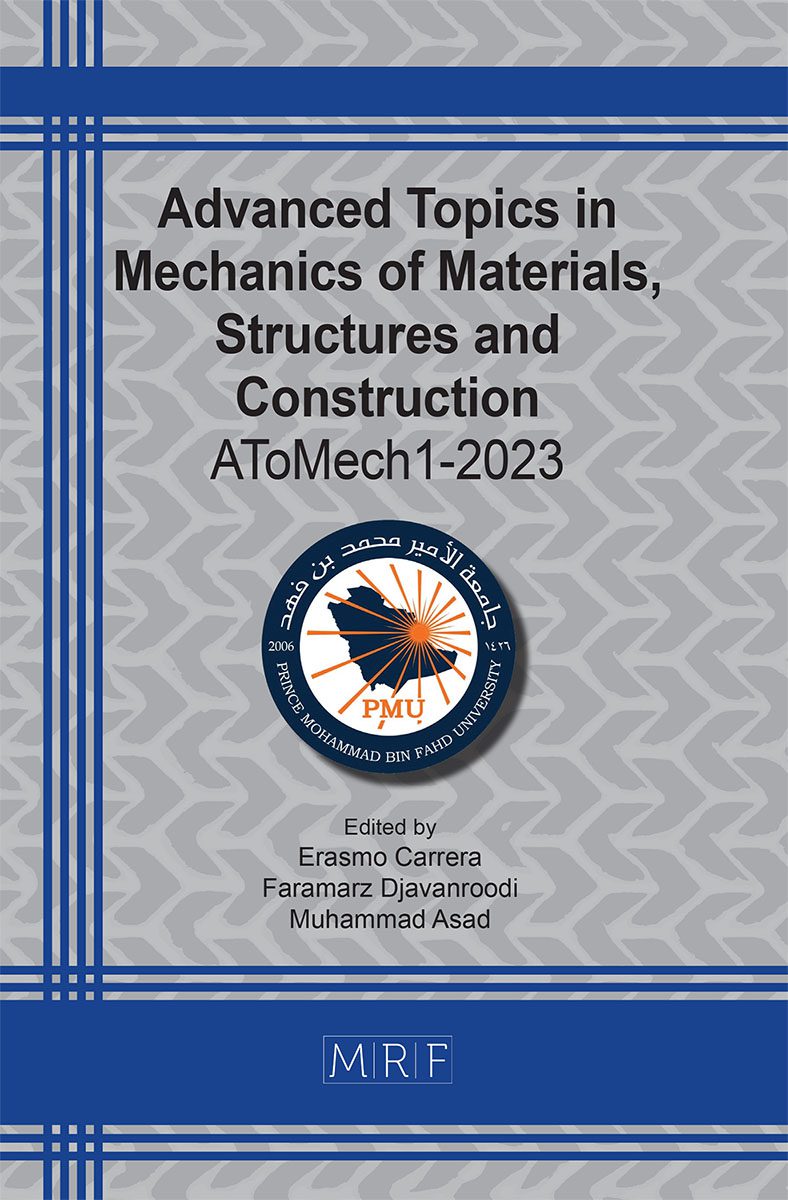A comparative study on the use of laser beam and abrasive water jet in hole making process of woven laminated GFRP
Hussein Mohammad Ali
download PDFAbstract. In the manufacturing process, the designed part will be presented in a drawing with all dimensions normally given within a certain range of tolerances. The tolerance defines the limits of induced deviation for which allowance should be made in the design, and within which actual size is acceptable. In laser and abrasive water jet cutting, dimensional accuracy is one of the important parameters to define the quality of produced part. The aim of the present work is to compare experimentally the influence of cutting parameters on dimensional accuracy and strength of hole making in GFRP by using (LBM) and (AWJM) cutting technologies. Full factorial design was used as a statistical method to study the effects of control parameters on the response variables. The results show that abrasive water jet cutting gives a less out of roundness in cutting hole diameter, less reduction in strength and large difference between upper and lower diameter compared to the laser cutting technology of hole making in the type of the GFRP composite material used in the present work.
Keywords
AWJ, CO2 Laser, Dimensional Accuracy, Strength
Published online 8/10/2023, 15 pages
Copyright © 2023 by the author(s)
Published under license by Materials Research Forum LLC., Millersville PA, USA
Citation: Hussein Mohammad Ali, A comparative study on the use of laser beam and abrasive water jet in hole making process of woven laminated GFRP, Materials Research Proceedings, Vol. 31, pp 212-226, 2023
DOI: https://doi.org/10.21741/9781644902592-23
The article was published as article 23 of the book Advanced Topics in Mechanics of Materials, Structures and Construction
![]() Content from this work may be used under the terms of the Creative Commons Attribution 3.0 license. Any further distribution of this work must maintain attribution to the author(s) and the title of the work, journal citation and DOI.
Content from this work may be used under the terms of the Creative Commons Attribution 3.0 license. Any further distribution of this work must maintain attribution to the author(s) and the title of the work, journal citation and DOI.
References
[1] E. Lemma, L. Chen and E. Siores, Study of Cutting Fiber-Reinforced Composites by Using Abrasive Water-Jet with Cutting Head Oscillation. Composite Structures. 2002, 57:1- 4, pp. 297-303. https://doi.org/10.1016/S0263-8223(02)00097-1
[2] W. Hufenbach, D. ski LA, M.Gude, J.Konieczny, A.Czulak. Optimization of rivet joints of CFRP composite material and aluminum alloy. J Achieve MaterManuf Eng 2007, 20:119-22.
[3] R.Teti . Machining of composite materials. CIRP Annals – Manu Techno 2002, 51:611-34 https://doi.org/10.1016/S0007-8506(07)61703-X
[4] A. Abrao , P. Faria, R.Campos, P. Reis , J. Davim. Drilling of fiber reinforced plastics: a review. J Mater Process Techno 2007, 186:1-7. https://doi.org/10.1016/j.jmatprotec.2006.11.146
[5] H. Eltawahni an, M.Hagino b, K.Y.Benyounis d, T.Inoue b, A.G.Olabic. Effect of CO2 laser cutting process parameters on edge quality and operating cost of AISI316L. Optics & Laser Technology 2012, 44 :1068-1082 https://doi.org/10.1016/j.optlastec.2011.10.008
[6] A. Kumar, Y. Vinod. Laser beam machining-A review International Journal of Machine Tools & Manufacture. 2008, 48: 609-62 https://doi.org/10.1016/j.ijmachtools.2007.10.017
[7] H. Hocheng, A failure analysis of water jet drilling in composite laminates, International Journal of Machine Tools and Manufacture, Vol. 30, No. 3, 1990, pp.423-429. https://doi.org/10.1016/0890-6955(90)90186-M
[8] M. Ramulu, M, P. Young, H. Kao, Drilling of Graphite/Bismaleimide Composite Material, Journal of Materials Engineering and Performance, Vol.8, No.3, 1999, pp.330-338. https://doi.org/10.1361/105994999770346882
[9] H. Hocheng, C.C. Tsao, The path towards delamination-free drilling of composite materials, Journal of Materials Processing Technology, 2005,167, pp.251-264. https://doi.org/10.1016/j.jmatprotec.2005.06.039
[10] G. Derringer, R. Suich, Simultaneous optimization of several response variables, Journal of Quality Technology1980, 12: 214-219 https://doi.org/10.1080/00224065.1980.11980968
[11] I.A.Choudhury, S.Shirley, Laser cutting of polymeric materials: An experimental investigation, Journal of Optics & Laser Technology, Optics & Laser Technology 42 (2010) 503-508 https://doi.org/10.1016/j.optlastec.2009.09.006
[12] A.Cenna, P.Mathew, E Evaluation of Cut Quality of Fiber reinforced plastic, A review, Int.J.Mach.Tools Manufact.Vol.37, No.6, pp.723-736, 1997 https://doi.org/10.1016/S0890-6955(96)00085-5
[13] D. Shanmugam, S.H. Masood. An investigation on kerf characteristics in abrasive waterjet cutting of layered composites, journal of materials processing technology 2 0 9 (200 9) 3887-3893 https://doi.org/10.1016/j.jmatprotec.2008.09.001
[14] S. Hloch, Stanislav FABIAN, Miroslav RIMÁR, Design of Experiments Applied on abrasive water factors sensitivity identification. Nonconventional Technologies Review – no. 2/2008































